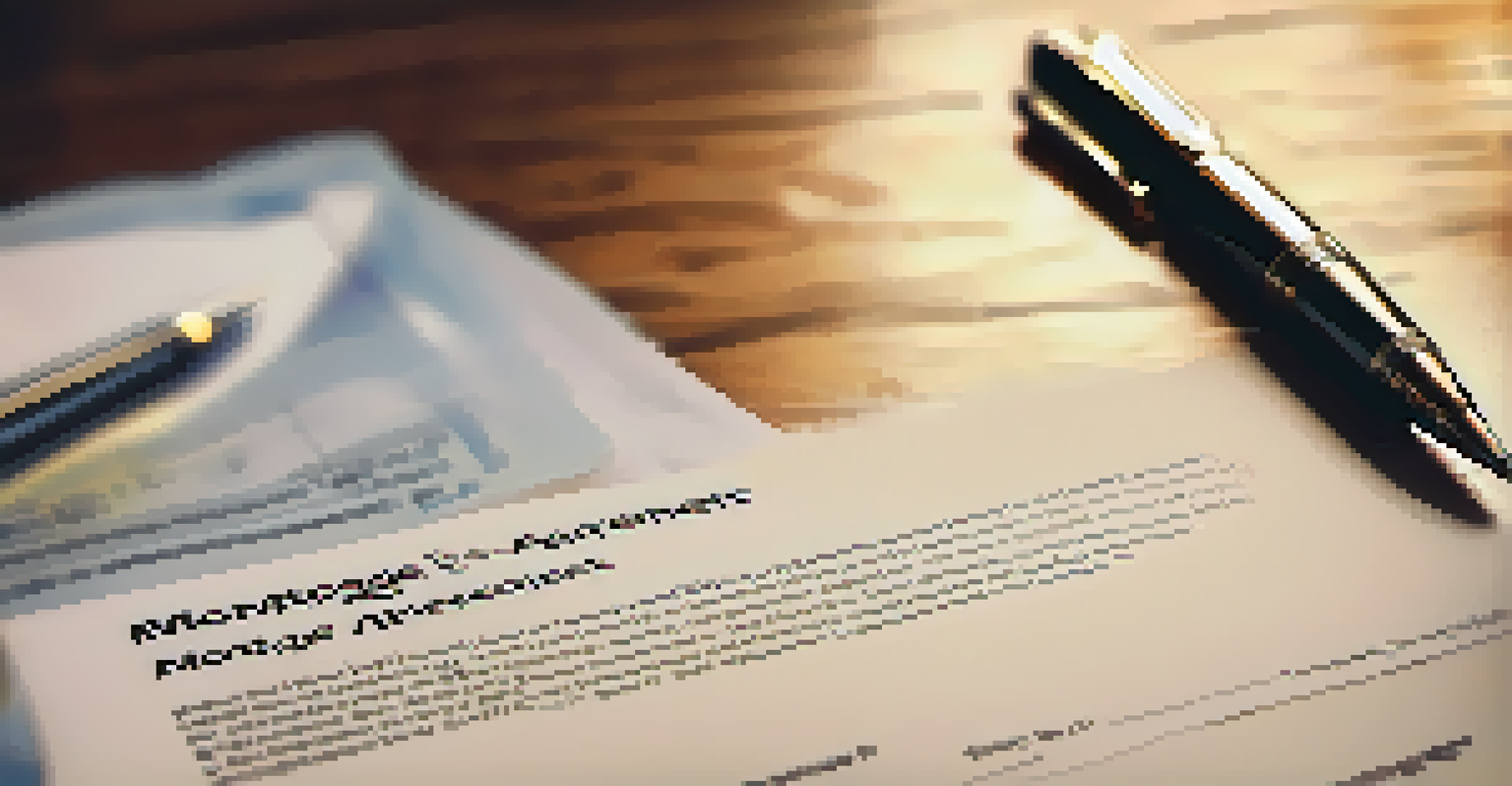How Interest Rates Affect Foreclosure Rates

What Are Interest Rates and Their Importance?
Interest rates represent the cost of borrowing money, usually expressed as a percentage. They play a crucial role in the economy, influencing everything from mortgage rates to consumer spending. When interest rates rise, borrowing becomes more expensive, which can lead to a decrease in consumer confidence and spending.
Interest rates are like the tides of the economy; they rise and fall, impacting everything from consumer behavior to the housing market.
For homeowners, higher interest rates can mean higher monthly mortgage payments, making it tougher to keep up with financial obligations. Conversely, when interest rates fall, borrowing becomes cheaper, allowing more people to buy homes and invest in property. Understanding these dynamics is key to grasping how they affect foreclosure rates.
Essentially, interest rates act as a barometer for the economy, impacting both individual financial decisions and broader economic trends. When rates fluctuate, they can cause ripples that affect homeowners' ability to manage their mortgage payments.
The Link Between Interest Rates and Foreclosure Rates
Foreclosure rates are directly influenced by interest rates, as changes in borrowing costs can impact homeowners' ability to pay their mortgages. When interest rates rise, many homeowners may find their monthly payments becoming unaffordable, leading to increased defaults and ultimately foreclosures. This is especially true for those on adjustable-rate mortgages, which can see significant jumps in payment amounts.

On the flip side, lower interest rates can help homeowners refinance their mortgages, often resulting in lower payments and improved financial stability. This can lead to a decrease in foreclosure rates, as homeowners are better equipped to manage their finances and maintain their homes. Hence, the relationship between interest rates and foreclosure rates is a delicate balancing act.
By monitoring interest rate trends, potential homebuyers and current homeowners can better prepare for possible financial challenges. Understanding this link can empower individuals to make informed decisions about homeownership.
How Economic Conditions Influence Interest Rates
Interest rates are not static; they fluctuate based on economic conditions. Central banks, like the Federal Reserve in the U.S., adjust rates to control inflation and stabilize the economy. When the economy is booming, rates typically rise to prevent overheating, while during a downturn, rates may be lowered to stimulate growth.
The market is a living entity, and interest rates are its pulse; when they change, everything feels the effect.
These changes can have profound effects on homebuyers and homeowners alike. For instance, in a strong economy, rising interest rates can lead to higher foreclosure rates as some borrowers struggle to adapt to the increased costs. Conversely, during economic slowdowns, lower rates can help mitigate foreclosure risks by making mortgages more affordable.
In essence, the interplay between economic conditions and interest rates creates a ripple effect that can either alleviate or exacerbate foreclosure rates. Staying informed about these conditions can help homeowners navigate their financial landscapes more effectively.
Adjustable vs. Fixed-Rate Mortgages: Different Impacts
The type of mortgage a homeowner has can significantly influence how interest rate changes affect them. Borrowers with adjustable-rate mortgages (ARMs) may experience more immediate impacts when interest rates rise. Their payments can increase sharply, making it harder to keep up with mortgage obligations and increasing the risk of foreclosure.
In contrast, those with fixed-rate mortgages enjoy stable payments regardless of interest rate fluctuations. This stability can provide a safety net against sudden economic shifts, allowing homeowners to plan and budget more effectively. Therefore, understanding the differences between these mortgage types is crucial for homeowners.
Ultimately, the choice between an adjustable and fixed-rate mortgage can shape a homeowner's financial future, particularly in a changing interest rate environment. It's essential for prospective buyers to consider their long-term financial goals when making this decision.
The Role of Government Policies in Foreclosure Rates
Government policies can significantly impact foreclosure rates and are often influenced by prevailing interest rates. During economic downturns, governments may implement measures such as loan modifications and foreclosure moratoriums to help struggling homeowners. These policies aim to provide relief and decrease the number of homes entering foreclosure.
Interest rates play a part here as well; lower rates can make refinancing more accessible, allowing homeowners to adjust their loans and potentially avoid foreclosure. Conversely, if interest rates are high and policies are not sufficient, more homeowners may find themselves unable to cope with their mortgage payments.
Understanding the intersection of government actions and interest rates can provide insights into foreclosure trends. Homeowners should keep an eye on policy changes that may affect their financial situations, especially during economic uncertainty.
How Foreclosure Rates Affect Local Economies
When foreclosure rates rise, the impact is felt beyond individual homeowners; local economies can also suffer. High foreclosure rates can lead to decreased property values, which affects neighborhood stability and can deter potential buyers. This can create a cycle of decline, where lower property values lead to further foreclosures.
Additionally, foreclosures can strain local services and resources, as municipalities grapple with the repercussions of vacant homes and declining tax revenues. This can result in a reduced ability to provide essential services, ultimately impacting the community's quality of life.
As such, understanding how foreclosure rates relate to interest rates is vital not only for homeowners but also for local communities. By addressing these issues, communities can work towards creating a more stable and thriving environment.
Preparing for Changes in Interest Rates and Foreclosure Risks
Given the significant connection between interest rates and foreclosure rates, it's crucial for homeowners and buyers to prepare for potential changes. Staying informed about interest rate trends can help individuals make proactive financial decisions, such as refinancing before rates rise or budgeting for increased payments.
Engaging with financial advisors or mortgage professionals can provide valuable insights and strategies tailored to individual circumstances. They can help homeowners explore options that may mitigate the risk of foreclosure, such as loan modifications or alternative financing arrangements.

Ultimately, being proactive and informed is the best defense against the impacts of rising interest rates. By understanding the potential risks and taking action, homeowners can better safeguard their financial futures.